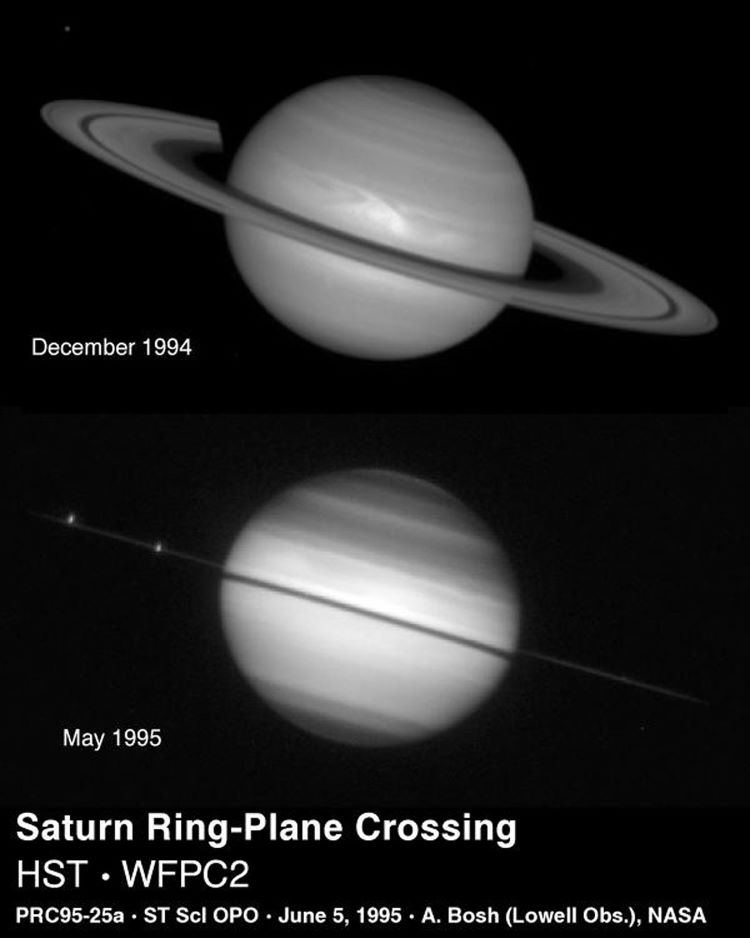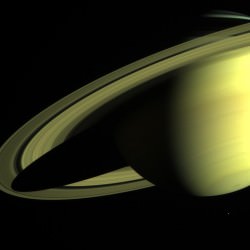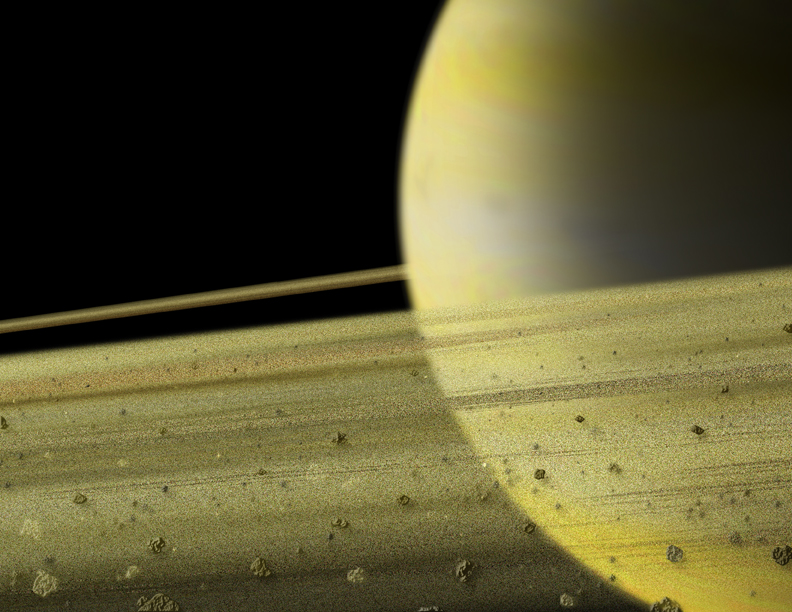[/caption]
Were you wondering who discovered Saturn? Well, nobody knows. Here’s the problem. Saturn is one of the 5 planets that you can see with the unaided eye. In fact, if you’re seeing a bright star in the sky, there’s a good chance it’s Saturn. It takes a telescope to see the rings, but anybody can find Saturn, even in a bright city.
So perhaps a better question might be to ask, when did astronomers realize that Saturn was a planet? The ancient astronomers believed in the geocentric model of the Universe. The Earth was at the center of the Universe, and everything else orbited around it in crystal shells: the Sun, the Moon, the planets and the stars. One problem with this model was the strange movements of the planets. They would sometimes slow down, stop and even travel backwards in the sky. And to explain this, astronomers had to create elaborate models for the planets where the orbited inside spheres within spheres.
Anyway, this model was turned on its ear by Nicolaus Copernicus in the 1500s. He placed the Sun at the center of the Solar System, and had all the planets orbiting around it. This nicely explained the strange movements of the planets. They weren’t going backwards, it was just a change in perspective, since the Earth is also going around the Sun.
The first person to actually look at Saturn in a telescope was Galileo. He saw a strange oval-shaped planet. He thought the planet might have ears, or two small balls on either side. Later observations showed that these were actually Saturn’s grand ring system. Galileo also discovered Saturn’s moon Titan.
Better observations of Saturn by Giovanni Cassini turned up 4 additional moons of Saturn, as well a division in the rings that would later be named after him: the Cassini division.
But it wouldn’t be until 1979 that the first spacecraft flew past Saturn. NASA’s Pioneer 11 spacecraft made the journey, getting within 20,000 km of the planet’s cloud tops. This was followed by the Voyager spacecraft, and eventually NASA’s Cassini spacecraft that’s orbiting the planet today. All of our best images of Saturn were sent back by orbiting spacecraft.
We have written many articles about the discovery of planets for Universe Today. Here’s an article about the discovery of Uranus, and here’s an article about the discovery of Neptune.
If you’d like more info on Saturn, start with the NASA Cassini mission homepage. That’s where you’ll see all the latest news and photos sent back from Saturn. Then check out Hubblesite’s News Releases about Saturn.
We’ve also recorded an entire episode of Astronomy Cast just about Saturn. Check it out here, Episode 59: Saturn.
Reference:
NASA




